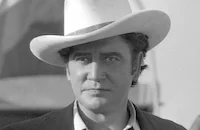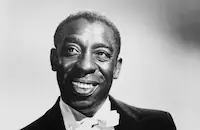Secret Service
Brief Synopsis
Cast & Crew
J. Walter Ruben
Richard Dix
William Post Jr.
Shirley Grey
Nance O'neil
Harold Kinney
Film Details
Technical Specs

Synopsis
During the Civil War, Union Army officers Capt. Lewis Dumont and his brother, Lt. Henry Dumont, are assigned to infiltrate the Confederate telegraph office in Richmond, Virginia and send phony messages to divert the Rebel forces during a key Union attack. Dressed as a Confederate, Lewis takes on the identity of Capt. Thorne, a deceased Texas officer, while Henry is planted in a Rebel prison near Richmond. As Thorne, Lewis is wounded in a skirmish with a Yankee unit, but rescues another injured Confederate, Howard Varney, and helps him back to his nearby house. Out of gratitude, Howard's sister Edith, whose father is a Rebel general, insists that Lewis remain at their plantation until his own wounds have healed. While recuperating, Lewis ingratiates himself at the Richmond telegraph office. Then, he asks Jonas Polk, a Varney slave, to make contact with his brother, without revealing to the old man his identity. At the same time, Mr. Arlesford, a rejected suitor of Edith's, notices Henry's name on the prisoner list and connects him to rumors he has heard about a pair of Yankee spies named Dumont. Suspicious, Arlesford plants a Rebel spy in the prison, and the spy witnesses Jonas' exchange with Henry. As Jonas is leaving the prison, he is interrogated by Arlesford, who finds a coded message in his belongings, and is sentenced to hang. After the execution, Arlesford informs Edith that he suspects Lewis of being Henry's brother. Edith, who has fallen in love with Lewis, protests his innocence and demands that, as proof, Henry be brought to her house. However, just before Henry's arrival, Lewis, sensing trouble, confesses his unconditional love to Edith. When Henry and Lewis are forced to confront each other at the Varney's home, they deduce Arlesford's scheme, and Henry shoots himself to protect their cover. That night, as Lewis telegraphs his phony orders to Confederate headquarters, he is watched by Edith and a still suspicious Arlesford. Before Lewis completes the message, Arlesford interrupts him and calls in the guard. Accused by General Randolph, Lewis is saved by Edith, who produces a notice of a special commission that she had secured for Lewis through her father. Although torn between love and duty, Lewis finally decides not to send his message and escapes to the Varneys to say goodbye to his brother. Caught once again, Lewis is spared from Arlesford's execution, as well as Edith's disdain, when Randolph learns that no message had been sent. As he leaves as Randolph's prisoner, Lewis pledges to return to Edith one day.

Director
J. Walter Ruben
Cast

Richard Dix
William Post Jr.

Shirley Grey

Nance O'neil
Harold Kinney

Gavin Gordon
Florence Lake
Frederick Burton

Clarence Muse
Eugene Jackson
Fred Warren
Virginia Sale
Carl Gerard
Gertrude Howard
Crew
James Anderson
Charles Burke
Robert Coburn
Edward Cronjager
George Diskant
George D. Ellis
Edward Henderson
Jack Kitchin
William Lebaron
Gerrit J. Lloyd
Russell Metty
Max Rée
Max Rée
Louis Sarecky
Bernard Schubert

Film Details
Technical Specs

Articles
Secret Service
This RKO Radio Picture was an adaptation of a popular play by William Gillette. Secret Service opened on Broadway on October 5, 1896, and saw three revivals - in 1910, 1915, and 1976. Gillette is remembered today as the first actor to win acclaim for playing Sherlock Holmes. He wrote and staged the first such play, authorized by Arthur Conan Doyle, in 1899 and continued touring the country as Holmes for most of the rest of his life. Among Gillette's other plays as writer-performer were The Private Secretary and Too Much Johnson.
Director J. Walter Ruben and writer Bernard Schubert stage the action in the film version of Secret Service effectively enough that it does not feel like an adapted stage play. The Civil War action scenes near the beginning are suitably realistic, and a sense of scale is given to the comings and goings in the Richmond telegraph office, particularly during a tense series of sequences at the climax.
At the time of this film's release, Richard Dix was enjoying great acclaim as the star of Cimarron (1931), which had been released earlier in the year. Dix would go on to win the Best Actor Oscar® for that role, and would continue as RKO's most reliable and stalwart leading man through the 1930s and to his final film for the studio, Val Lewton's The Ghost Ship, in 1943.
Secret Service featured one of the best roles in the long career of African-American actor Clarence Muse. Muse, whose appearances spanned from the silent era through to Carroll Ballard's The Black Stallion in 1979, was most often cast in minor roles typical for a black actor of the era, such as a porter or waiter. He gives one of the best performances in Secret Service, as the sympathetic and tragic Jonas - a slave who is both knowingly and unknowingly aiding the Union cause. Muse had just appeared in one of the other meatier roles of his career, as Jim in the lamentable 1931 version of Huckleberry Finn for Paramount Pictures.
The Gillette play Secret Service was adapted for the screen by Bernard Schubert. Other notable adaptations by Schubert followed, such as Symphony of Six Million (1932), from a story by Fannie Hurst, and the 1934 version of Peck's Bad Boy, with Jackie Cooper. Schubert was one of several contributing writers to Tod Browning's Mark of the Vampire (1935), and he also co-wrote several horror films at Universal in the 1940s, including The Mummy's Curse (1944), Jungle Woman (1944), and The Frozen Ghost (1945).
Producer: William LeBaron, Louis Sarecky
Director: J. Walter Ruben
Screenplay: Bernard Schubert, based on the play by William Gillette
Cinematography: Edward Cronjager
Film Editing: Jack Kitchin
Art Department: Max Ree
Music: Max Steiner
Costume Design: Max Ree
Cast: Richard Dix (Captain Lewis Dumont), William Post, Jr. (Lt. Henry Dumont), Shirley Grey (Miss Edith Varney), Nance O'Neil (Mrs. Varney), Harold Kinney (Howard Varney), Gavin Gordon (Mr. Arlesford), Florence Lake (Caroline Mitford), Frederick Burton (General Randolph), Clarence Muse (Jonas Polk).
BW-69m.
by John M. Miller

Secret Service
Quotes
Trivia
Notes
RKO borrowed Shirley Grey from Samuel Goldwyn's company for this production. Variety identifies the black actress playing "Martha" as Gertrude Howard, while other sources, including the copyright descriptions, identify her as Emma Reed. Based on contemporary photographs, it is possible that Howard played the role. No confirming photographs or other biographical information for Reed were located. According to Film Daily, Johnny Risso, a one-armed tennis player, was added to the cast, but his participation in the final film has not been confirmed. William Gillette's play was first filmed by Famous Players Lasky Corp. in 1919. Hugh Ford directed Robert Warwick and Wanda Hawley in that silent version (see AFI Catalog of Feature Films, 1911-20; F1.3918).














